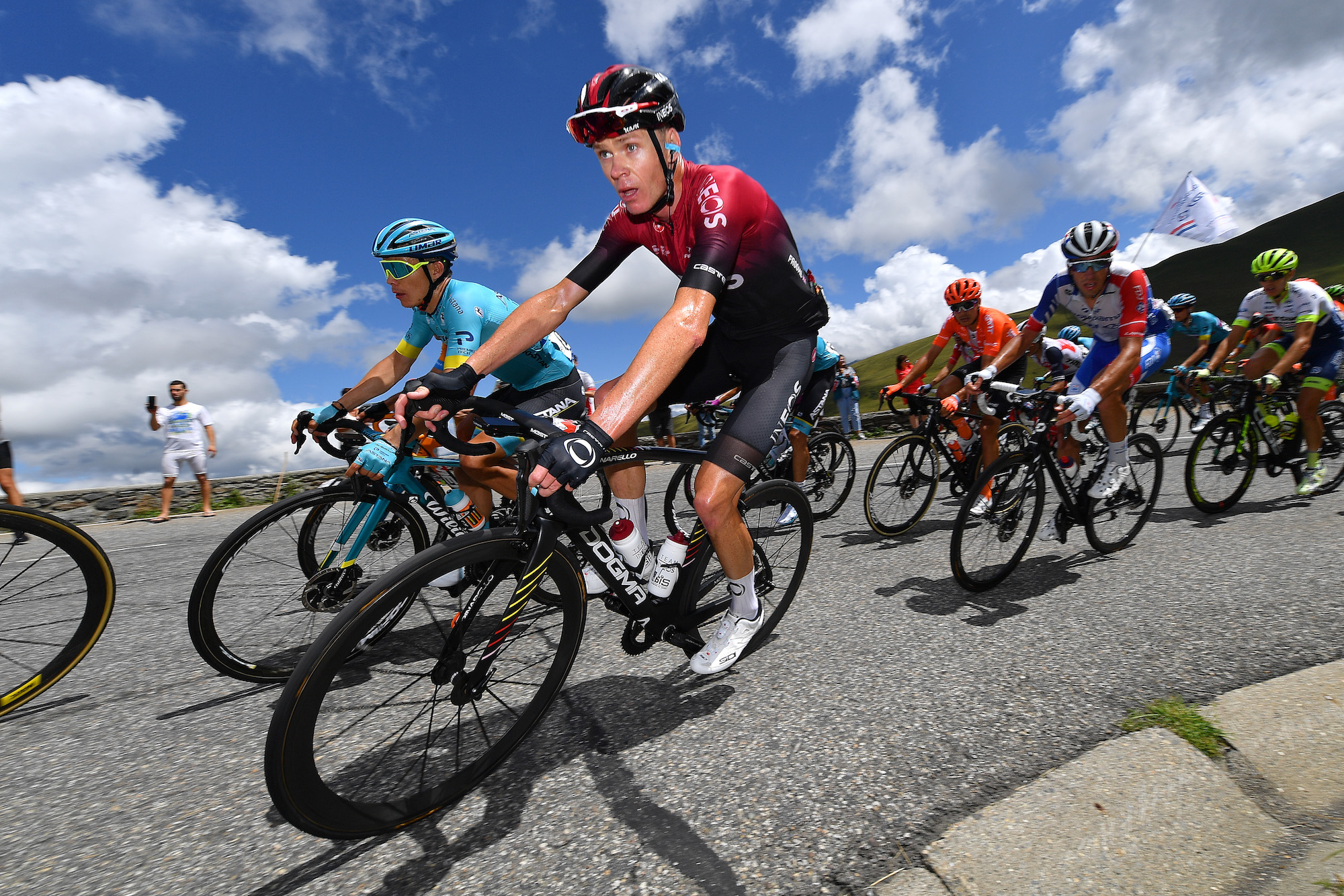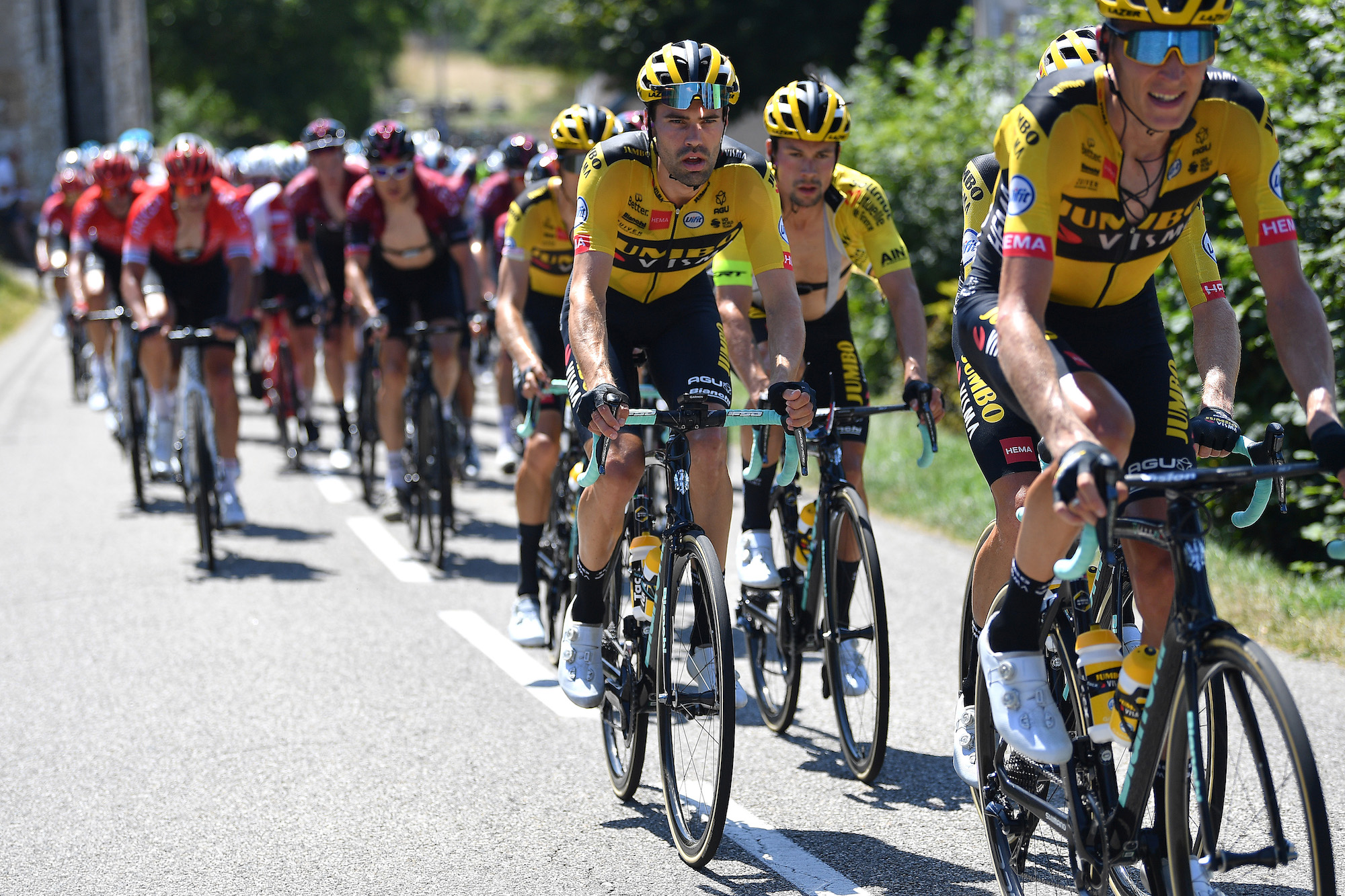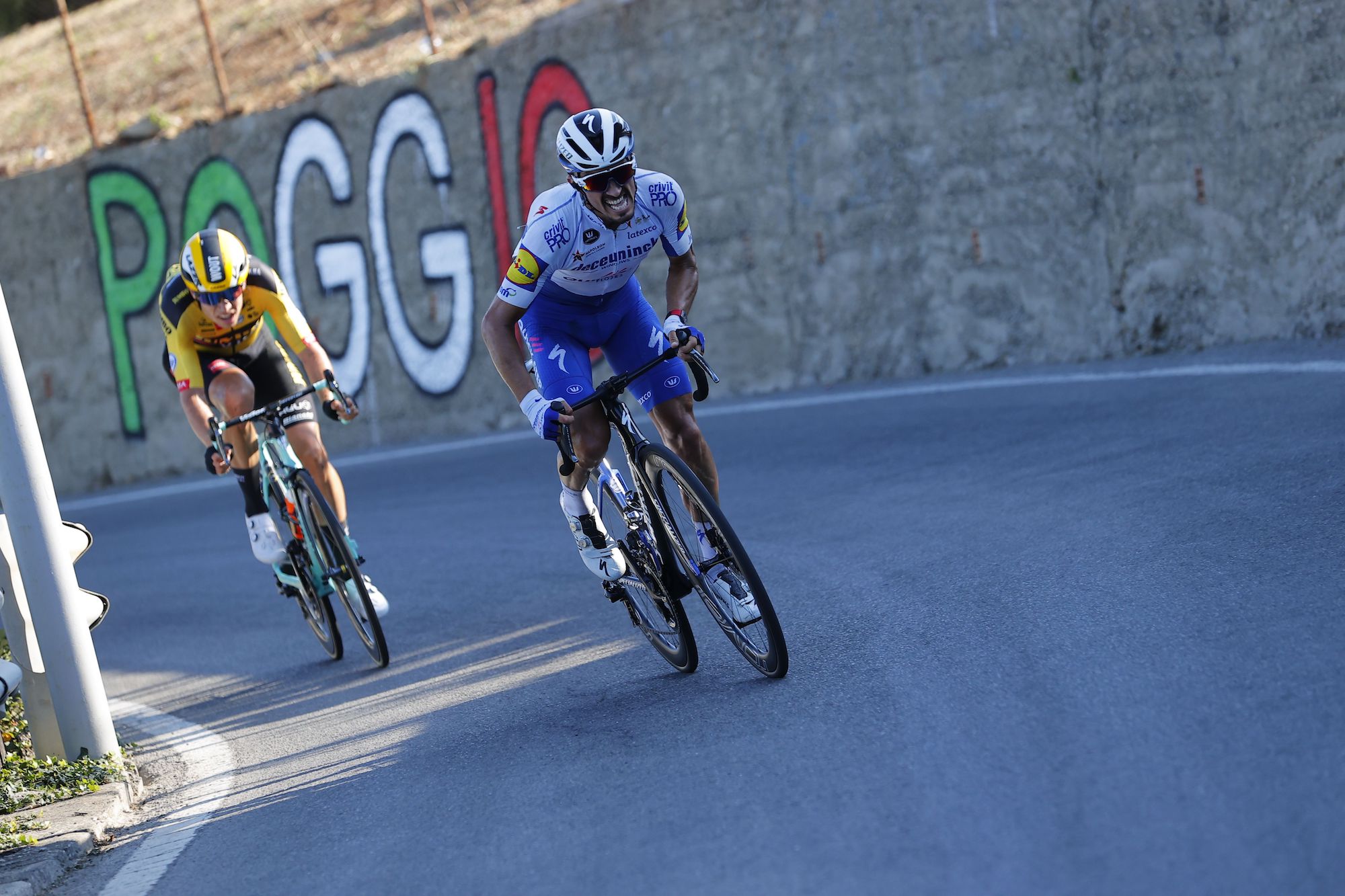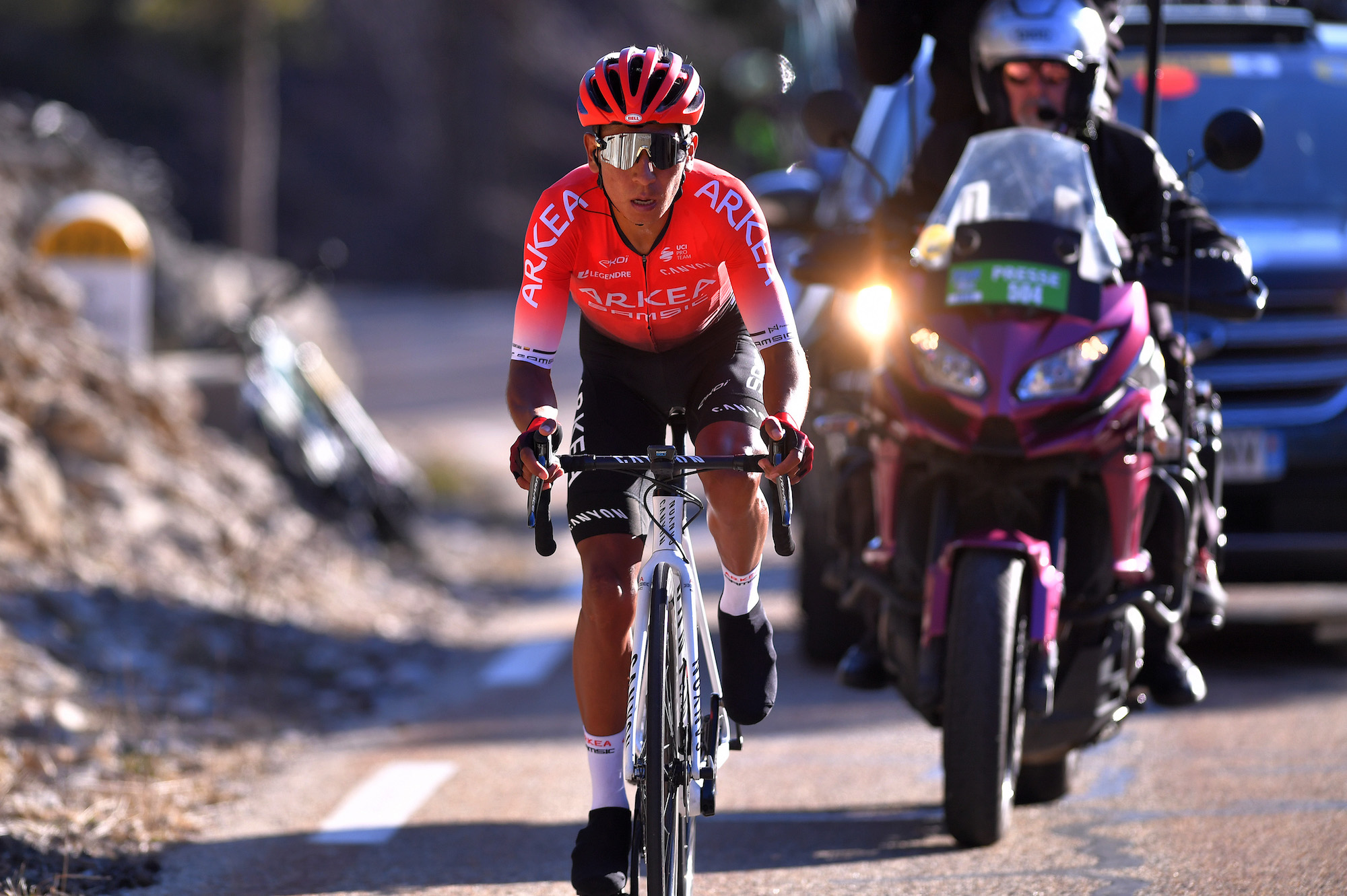Five things to look out for at the Critérium du Dauphiné 2020
A big week of climbing on the cards for riders at this year's Critérium du Dauphiné
Climbs. And lots of them

The rush to squeeze as many races as possible into the interrupted 2020 calendar means that this week’s Critérium du Dauphiné will be a truncated affair, reduced from its usual size of eight stages to just five.
Given that the Dauphiné is already renowned for being a sort of miniaturised version of the Tour de France, you might have expected the organisers to have retained the balance with a mixture of flat, rolling and mountainous stages. Quite the contrary. They have instead opted for a gluttony of climbing, effectively abandoning the planned first half of the race and all of the sprinters stages to instead head directly from the starting city of Clermont-Ferrand eastwards into the Alps.
All five stages will end in uphill finishes. Of these, the summits of the Col de Porte and Saint-Martin-de-Belleville at the end of stages two and three respectively are the most difficult, while the brutal number of climbs (six on stage four, seven on stage five) that precede the Montee de L'altiport de Megève climb that hosts the finish of both the final two stages will ensure the race has already blown to pieces long before it reaches its relatively modest slopes.
Only the opening day offers any hope to the non-climbers, and even then it’s certainly not one for the sprinters. The undulating terrain and the long (albeit gentle) uphill to the finish is likely to be too much for the few sprinters (such as Peter Sagan (Bora-Hansgrohe) and Alexander Kristoff (UAE Team Emirates) who have braved an appearance at this mountainous Dauphiné, meaning puncheurs like Alexey Lutsenko (Astana), Davide Formolo (UAE Team Emirates) and the Bahrain-McLaren duo of Dylan Teuns and Matej Mohorič will be among those gunning for their solo chance of a stage win this week.
Team Ineos regroup as Froome aims to prove worth

Over the past decade, Team Ineos have dominated the Critérium du Dauphiné about as comprehensively as they have the Tour de France, winning six of the nine editions held since 2011.
The latest race content, interviews, features, reviews and expert buying guides, direct to your inbox!
Each time they’ve used the race to assert their dominance ahead of the Grand Boucle, but this year their status as the world’s best stage racing team is under serious threat in the form of Dutch squad Jumbo-Visma.
>>> Check out the Jumbo-Visma squad that will challenge Team Ineos at the Critérium du Dauphiné 2020
In what was billed as the first major contest between Ineos and their would-be usurpers at the Tour de l’Ain last week, Jumbo-Visma came out categorically on top, with Ineos’ leader Egan Bernal left to fend for himself against several of their yellow-clad climbers, ultimately losing out on overall victory to their leader Primož Roglič.
For the Dauphiné, reinforcements have been called upon. Bernal and his underperforming allies of Geraint Thomas and Chris Froome will be joined by super-domestiques Michał Kwiatkowski, Dylan van Baarle and Pavel Sivakov, all of whom are expected to form part of the Tour de France line-up later this month.
Froome’s position in the Tour squad is less certain, and he’ll need a strong showing in service of Bernal’s bid for overall victory here to earn this place. Whereas the question during the months leading into the 2019 Tour was whether Froome ought to be the team’s leader, now it’s whether he should be in the line-up at all, but such is the threat posed by Jumbo-Visma that Ineos cannot afford to rest on reputation when assembling a squad good enough to win the Tour.
Jumbo-Visma seek to continue momentum

Along with Deceuninck-Quick-Step, Jumbo-Visma has been the best team since racing returned from lockdown, with Wout van Aert landing the Italian classics double of Strade Bianche and Milan-San Remo, and Primož Roglič sealing a dominant performance at the Tour de l’Ain with two stage wins and the overall victory.
Now, Van Aert will join forces with Roglič and the mountain train that helped him win the Tour de l’Ain, forming what looks like a deadly Jumbo-Visma line-up intent on winning the overall classification.
>>> How to live stream the Critérium du Dauphiné 2020 – where to watch the major French stage race
As early as last December, the team announced the eight riders they intended to start the 2020 Tour de France, which at the time felt like a foolhardy statement given how much can change in this sport. But even the outbreak of the Covid-19 pandemic has done little to disrupt their plans, and seven of the eight riders announced back then will line-up at the Dauphiné this week, each fit and raring to go.
As the team’s on-form rider, Roglič is expected to lead the challenge both here and at the Tour, with his l’Ain supporting climbing super-domestiques Steven Kruijswijk and the fit again Tom Dumoulin (who showed decent form last week despite a 14-month absence from racing) joined by talented youngster Sepp Kuss to set the pace in the mountains.
With Van Aert joining Tony Martin to look after Roglič on what few flat kilometres there are this week, Jumbo-Visma have no obvious weakness to exploit. Team Ineos and everyone else have their work cut out to defeat them — both here and next month at the Tour.
Alaphilippe leads French home challenge

Despite their considerable strength, the Dauphiné won't just be contested by Jumbo-Visma and Ineos riders.
Among the teams’ most dangerous challengers could be two French riders returning to home roads after giving the notion long-overdue hope of a yellow jersey victory at last year’s Tour de France — Julian Alaphilippe (Deceuninck-Quick-Step) and Thibaut Pinot (Groupama-FDJ).
Alaphilippe would have been a good bet to win Il Lombardia this weekend following his devastating attack on the Poggio to finish second at Milan-San Remo on Saturday, but has instead chosen to ride the Dauphiné as preparation for the Tour.
>>> Critérium du Dauphiné 2020 start list: Froome, Alaphilippe, Bernal and Roglič go head to head
The route’s emphasis on the high mountains does not appear to be ideal for his punchy style of racing, but he defied expectations at last year’s Tour de France to do excel in the Alps and Pyrenees, and a strong ride here would be evidence that he’s capable of mounting another bid for the yellow jersey next month.
The other home favourite will be Thibaut Pinot, who is also building up to the Tour de France after last year’s ended in heartbreak.
Pinot will be in his element in the high mountains, and will be a contender for the overall classification if he can discover last summer’s form.
A Dauphiné for the mountain goats

With neither time trials, team time trials, or any variety of different types of road stages, this year’s Dauphine will be one for the mountain goats.
That will please both former Movistar riders Mikel Landa and Nairo Quintana (now riding for Bahrain-McLaren and Arkéa-Samsic, respectively), who each love high altitudes and would have both won a lot more races throughout their careers were it not for time trials.
How both climbers perform now free from the supposed shackles of shared leadership duties expected from them at Movistar, especially in relation to their revised line-up featuring veteran Alejandro Valverde and young new signing Enric Mas, will be one of the most intriguing subplots of the race.
Britain’s Adam Yates will also relish all the climbing, and typically brings excellent form into the Dauphiné, finishing second overall in 2018 and holding the leader’s jersey for much of last year’s edition. He too will also benefit from the absence of any time trialling.
Others to look for include unpredictable Colombian Miguel Ángel López (Astana), Trek-Segafredo’s on-form Richie Porte (the stage two finishing climb has his name on it, literally) and above all Tadej Pogačar (UAE Team Emirates), the 21-year-old Slovenian sensation who was on superb form before the lockdown.
Stephen Puddicombe is a freelance journalist for Cycling Weekly, who regularly contributes to our World Tour racing coverage with race reports, news stories, interviews and features. Outside of cycling, he also enjoys writing about film and TV - but you won't find much of that content embedded into his CW articles.